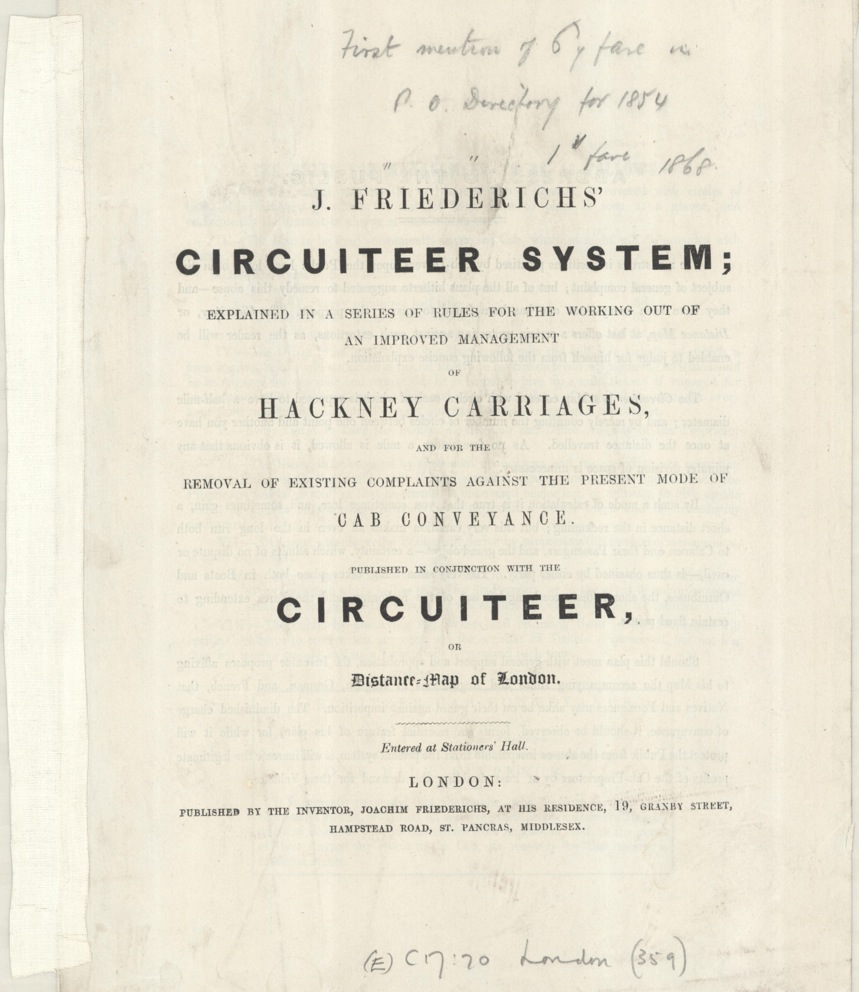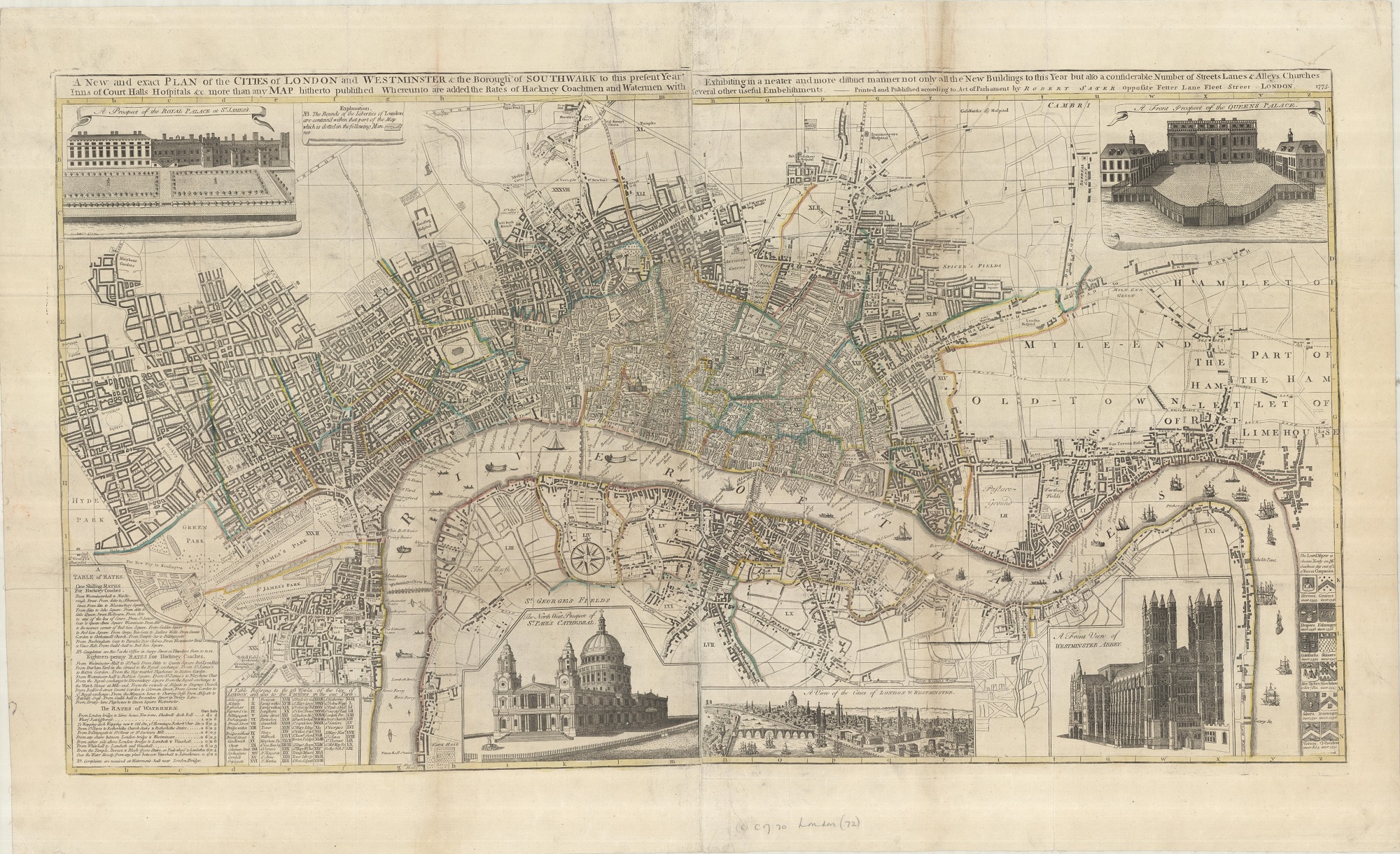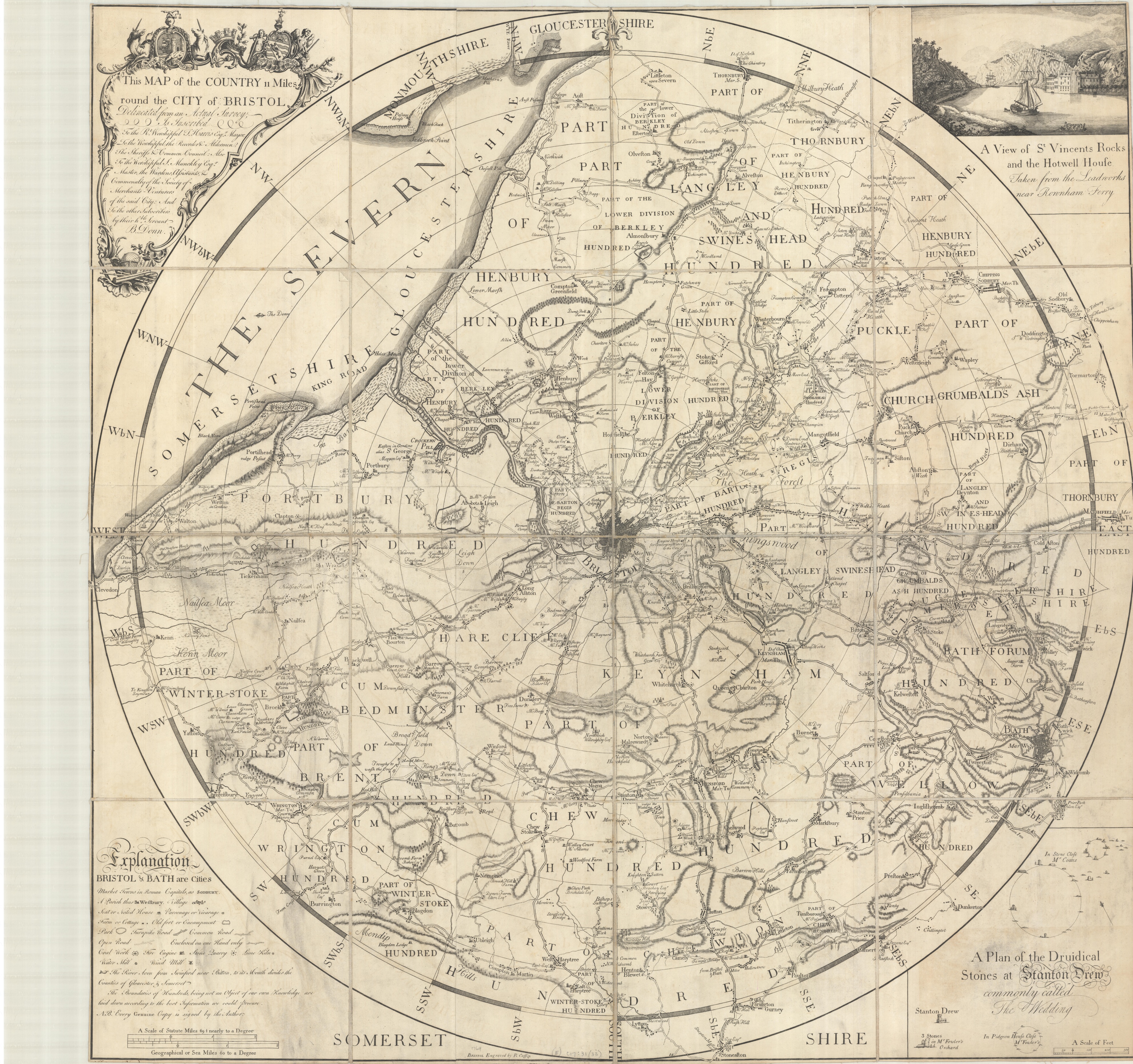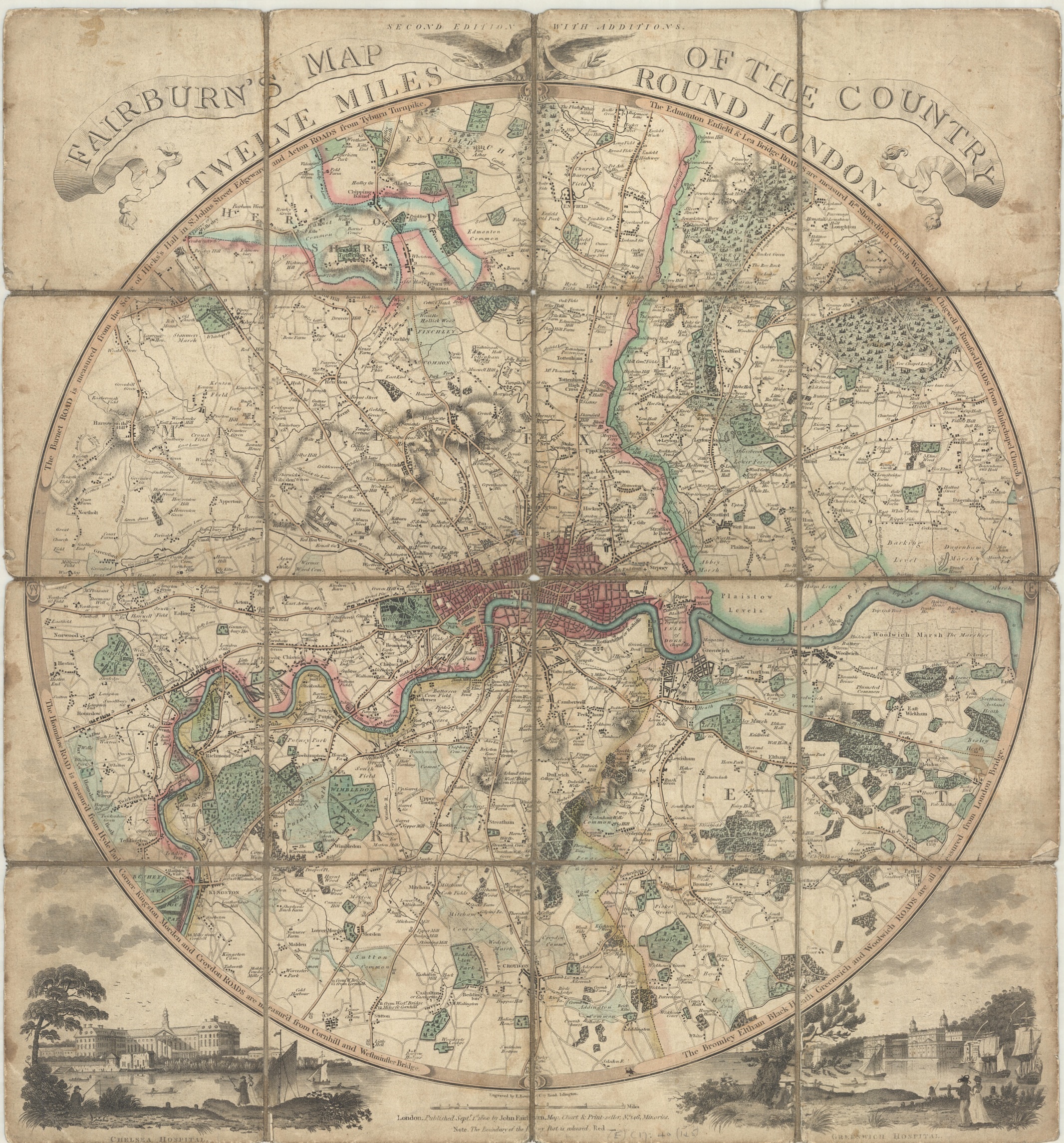Joachim Friederichs map of London takes an interesting approach to measuring distances. A series of circles covers the whole map, each one representing ½ a mile in diameter, making it possible, according to the cartographer, to ‘merely count the number of circles between one point and another you have at once the distance travelled’.
The Circuiteer, or distance map of London: invented by J. Friederichs, particularly adapted for cab conveyance c1850. (E) C17:70 London (359)
Measuring distances in maps is a long established practice; from simply putting in distances along roads from point ‘a’ to ‘b’ to concentric circles at a set distance radiating out from a central location to the scale bars and grids so familiar to us from our Ordnance Survey maps. With so many maps of London published Friederichs map stands out with it’s unusual approach.
As well as a distance guide the map serves as a proposal to right what the author sees as a serious case of wrong-doing, the over-charging by Hackney Carriage drivers. In text accompanying the map Frederichs writes ‘The monstrous imposition practised by Cab-Drivers upon the public have long been the subject of general complaint, but of all the plans hitherto suggested to remedy the abuse – and they have been many – not one has been found to ensure. The purpose the Circuiteer, or Distance Map, at least offers a certain protection against such extortions, as the reader will be enabled to judge for himself, from the following concise explanation.’
The text goes on to give examples of proposed fares, considered reasonable, by mile as opposed to by route, and suggests the buying of pre-paid tickets instead of paying cab fares.
Hackney Carriage fares have featured on numerous maps of the City. This example, A new and exact plan of the cities of London and Westminster & the Borough of Southwark…whereunto are added the rates of Hackney Coachmen and watermen with several other embellishments. By Robert Sayer, 1775. (E) C17:70 London (72), has, as well as a wonderful map of the City, a small box in the bottom corner giving a ‘Table of Rates’ at both a shilling and eighteen-penny and rates for the Thames watermen. The map also has insets of the major buildings and shows the Ward boundaries.
This example, A new and exact plan of the cities of London and Westminster & the Borough of Southwark…whereunto are added the rates of Hackney Coachmen and watermen with several other embellishments. By Robert Sayer, 1775. (E) C17:70 London (72), has, as well as a wonderful map of the City, a small box in the bottom corner giving a ‘Table of Rates’ at both a shilling and eighteen-penny and rates for the Thames watermen. The map also has insets of the major buildings and shows the Ward boundaries.











